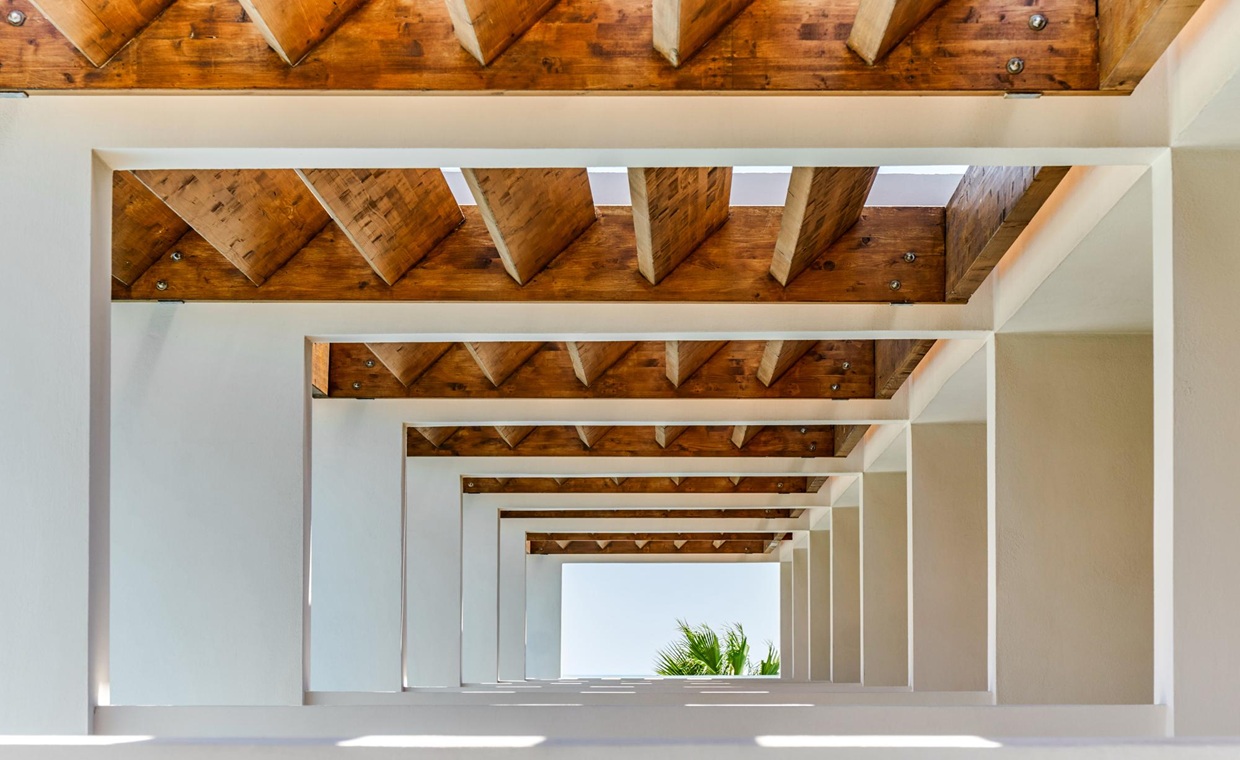
Are you looking for a unique yet stylish blend of bedding where culture meets practicality? Futon is a perfect blend of modern and traditional innovation. Slowly but surely, the Japanese habit of sleeping on a futon is attracting more and more attention. You’re probably wondering what a futon is. Let us learn in depth about what a futon is.
What is a Futon?

So, what is a futon? Let’s have a closer look. A futon is a Japanese-style mattress with a low-lying frame placed on the floor. Modern ones come with folding options to turn the futon into something like a chair. You may move the futon under the second bed if you have it set up on a frame. To allow more sleepers, many people choose to add a futon to their living room or common room. It also helps provide a greater seating area for guests.
History of the Futon: Why Do They Call It a Futon?

The word futon comes from an ancient Japanese word that originally referred to a round mat or cushion loaded with leaves and flowers. “Futon” is also a Japanese word for bed. If you visit a Japanese home, you will not find a bed because they fold and store their bed or futon in a spacious closet when not in use.

The cushioning must be fluffy to support your back when you sleep on it. Three sections make one futon. It is usually laid on the floor or a tatami mat. A futon, which consists of a light cotton pad or a shikibuton (a three-fold pad that lays below the light cotton pad) or a kakebuton (which is a comforter that sits on top of the light cotton pad) make up the three parts. Whether you’re talking about a traditional Japanese-style futon or a Western-style futon, or a platform bed futon, its design will have three basic components. Although the pieces are called by different names in each design, their functions are the same. The three sections are a supporting layer, a mattress layer, and a covering or top layer.
Types of Futons
01. Convertible Sofas as Futon

Futon mattresses are a part of convertible couches, which are single or integrated pieces of furniture. Modern, traditional, transitional, stylish, and comfortable convertible sofa designs are available. They are available in several diameters, ranging from 65 to 79 inches or more, and have a variety of vibrant and neutral hues to complement any design.
02. Loveseat Futons

Loveseat futons are ideal for adding extra seats (but also a comfy bed!) to a living room or bedroom in a tiny room, such as a playroom. Convertible futon-style loveseats provide seating for two people and range in size from around 51 inches to 73 inches when you select a model with a center cupholder console.
03. Futon & Mattress Combinations

Most people may imagine a frame with a separate mattress when they think of futons. A mattress with a frame combination offers the most flexibility because you can replace the mattress if it becomes old or worn, extending the life of the furniture. Futon frames made of high-quality materials can survive for decades, accompanying you from your first apartment to your everlasting home.
04. Futon Chairs

A futon chair is a beautiful, space-saving option to a sofa-sized futon that fits the bill as well as your small area. A futon chair folds down to provide a sleeping surface. Throughout the day, it seems to be any other easy chair with reclining capabilities, bringing the combination of the two to your living room, bedroom, family area, or wherever you want guests to relax in comfort.
05. Bi-Fold Futon Frame

It has eight base slates, which support the mattress and help you sleep comfortably. You can fold this to make a sofa and then straightened to make a bed.
06. Tri-fold Futon Frame

You can fold this in three different directions to provide the legs with more space for relaxation. It is simply transformed from a bed into a bi-fold futon sofa and then back again for a restful night’s sleep. When not in use, it usually has a wooden frame, which makes it lighter and simpler to fold.
07. Futon With Adjustable Arms

As compared to the tri-fold and bi-fold, a futon with adjustable arms is also available. This makes it much easier to modify the futon as needed. It allows you to effortlessly extend the length of the futon.
Different Futon Styles
01. Japanese Style Futon

The most common type is a classic Japanese-style futon, which is available in most stores. You can place these traditional futons on the tatami, which is a sort of mat used as a flooring material. These do not have a frame. You can fold them when not in use. These traditional futons are lightweight and made of organic cotton.
02. Western Style Futon

A western-style futon has a low wooden frame that looks like a sofa bed. They are much heavier than their Japanese counterparts and difficult to fold because their size is like that of a western mattress.
03. Platform Bed Futon

A platform bed futon has a single huge cushion that seems like a mattress. It is usually low to the ground and not very tall. While it looks like a mattress, it is much lighter and easier to fold when not in use. They are meant to be spread on bare floors and contain stuffing other than pure cotton.
What are Standard Futon Sizes?
Typically, they come in four sizes:
| TYPE | WIDTH | LENGTH |
| Twin Size Futon | 3’-2” (0.96m) | 6’-3” (1.92m) |
| Full size Futon | 4’-6” (1.37m) | 6’-3” (1.92m) |
| Queen Size Futon | 5’ 5” (1.37m) | 6’-8” (2.02m) |
| King size Futon | 6’-4” (1.92m) | 6’-8” (2.02m) |
Advantages and Disadvantages of Futon
Advantages
- Lightweight: They are incredibly lightweight to move from one area to another because they are filled with natural materials like cotton, wool, and leaves.
- Frameless: Traditional futons do not include a frame, making them extremely simple to place in any space or even fold when not in use.
- Versatility: Futons are extremely versatile because they can transform into a bed or even a sofa as needed.
Disadvantages
- Comfort: Although made of natural materials, futons provide limited comfort because they may cause back pain if used daily.
- Durability: A futon has an average life of up to 5 years and requires continuous cleaning because dirty futons decay faster.
- Thickness: Futons must be thinner than mattresses since they are easily foldable. This can be a reason for concern because they may get flat and require regular maintenance.
Here’s a video to sum up all the points mentioned above & below:
What to Look For When Choosing a Japanese Futon?
The first thing to look for while choosing a Japanese futon is its size. Futons are available in a variety of sizes that are based on the dimensions of a single tatami mat or slightly vary from international mattress sizes. The single size is the most popular, measuring 100 cm across and 210 cm long (3912″ wide by 8212″ long). A Japanese-style double futon is the same length as a standard futon but measures 140 cm, or 55 inches, across.
Consider selecting the best materials after choosing the futon size. Cotton is the most breathable option to select. A variety of synthetic fabrics are available for a less expensive futon, and because of the comfort and support they provide, foam futon mattresses have gained popularity recently.
Futon Mattress Materials
Cotton

Cotton is great for wicking away moisture, maintaining temperature balance, and having flame-resistant characteristics.
Latex

Latex is a sustainable material that gives support to the mattress and reduces pressure points.
Coconut Coir

Coconut coir is a unique mattress structure that combines coconut and hemp fibers with natural liquid latex.
Memory and Gel

Memory gel foams are popular; if you take this route, check for low-VOC soy foams instead of the conventional factory-made chemical foams seen in renowned mattress brands.
The Lifespan of a Futon
Unfortunately, futons or other mattresses do not last long. Futon’s mattress lifespan appears to be below average overall. Although, with proper care, it can live for up to five years. Keeping the mattress dry may help it last longer. If it is possible, dry the futon in the daylight or on an air deck. A mattress protector is also one of the finest ways to protect the mattress against moisture from the body.
Conclusion
On a final note, we hope we got you covered on what is a futon, the types of futons, different materials, the varied styles of futons and the lifespan of a futon. So, if you are the one who wants to merge modern and traditional innovation, futons are the one for you. A Japanese futon can be the ideal bedding option for us if we have been searching for a simpler design, value eco-friendly products, and must free up a little space, or simply provide comfortable seating for guests.
Before you take a leave, here we share a detailed guide to mattress maintenance tips:
13 Simple Mattress Maintenance Tips for a Clean and Comfy Bed
In addition, enhance your sleep quality with customized solutions for spacious mattress:
Elevating Sleep Quality Exploring Customized Solutions for Spacious Mattresses
Image Courtesy : Image 1,Image 2, Image 3,Image 6, Image 7,Image 8, Image 9, Image 10, Image 11, Image 12, Image 13, Image 15, Image 16, Image 17,Image 18
Author Bio
Mira Zala – Mira Zala is a civil engineer by profession and an avid content writer. She graduated from S.S. Gandhi Degree Engineering College, Gujarat. She loves to write blogs on building materials, gardening and technology. Apart from writing, she loves singing and painting.






























